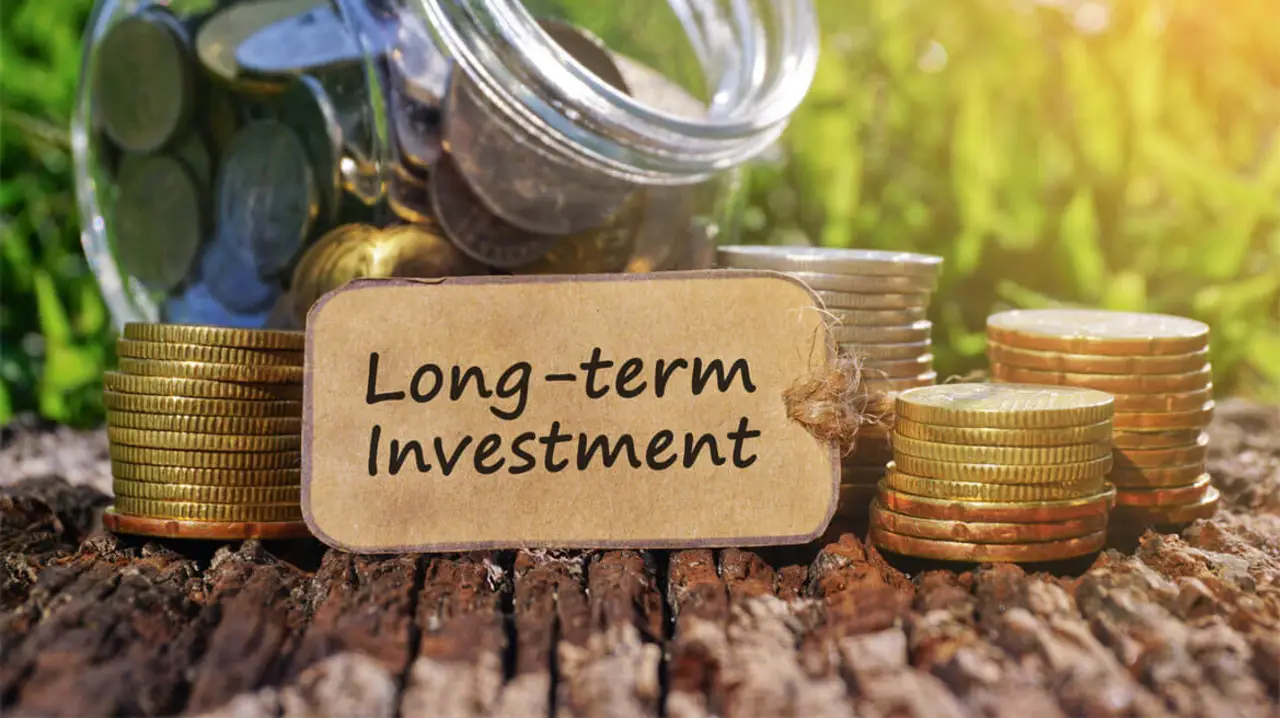What does it mean to have a 'long-term' investment?

Exploring the Benefits of Long-Term Investment Strategies
Investing for the long-term can be an effective way to secure your financial future. Long-term investments are typically those held for a period of five years or more. Investing for the long-term allows you to benefit from the compounding effect of returns, and can help you to build up a sizable nest egg over time.
Benefit from Compounding Returns
One of the primary benefits of long-term investing is the ability to benefit from the compounding effect of returns. This means that, as the returns on an investment increase, the amount of money you make from that investment increases as well. This is because the returns are reinvested, meaning that you are earning more money on the money you have already earned. This can result in larger returns over the long-term.
Opportunity to Diversify Your Investments
Long-term investments also provide an opportunity to diversify your investments. By investing for the long-term, you can spread your investments across a variety of different asset classes, such as stocks, bonds, and cash. This can help to reduce your risk and ensure that you are not overly reliant on any one asset class.
Time to Ride Out Volatility
Investing for the long-term also provides an opportunity to ride out short-term volatility. While short-term investments can be affected by short-term market fluctuations, long-term investments are more likely to remain steady over time. This can provide a more stable return on your investment, while allowing you to benefit from any long-term growth that may occur.
Higher Returns Over Time
Finally, long-term investments can offer higher returns over time. This is because there is more time to benefit from the compounding returns and to benefit from any long-term growth. Additionally, long-term investments typically have lower fees and taxes associated with them, resulting in more money in your pocket.
How to Develop a Long-Term Investment Plan for Maximum Returns
Investing in the stock market can be a great way to build your wealth over time, but it's important to have a plan in place to maximize the returns you get from your investments. To do this, you need to understand what it means to have a long-term investment plan.
The first step in developing a long-term investment plan is to set a goal. This goal should be specific, measurable, and achievable. Examples of long-term investment goals include retirement income, a down payment for a house, or a college fund for your children. Once you have set your long-term goals, you can begin to create an investment strategy based on your goals and risk tolerance.
When developing your long-term investment plan, diversification is key. This means investing in a variety of different asset classes, such as stocks, bonds, real estate, and commodities. By diversifying your portfolio, you can reduce your risk while still achieving your long-term goals.
It's important to choose investments that have the potential to appreciate over time. While some investments may have a higher return in the short-term, it's important to consider the long-term growth potential of the investments you choose. Additionally, it's important to understand the fees and taxes associated with each investment, as these costs can significantly impact your returns.
Finally, you should always be mindful of the market and adjust your portfolio as needed. This means monitoring stock prices and other investments, and selling when it's time to take profits or reallocate assets. Additionally, it's important to regularly review your portfolio to ensure it is aligned with your long-term goals.
By following these steps, you can create a long-term investment plan that will help you achieve your financial goals. With patience and discipline, you can maximize your returns and build your wealth over time.
Understanding the Risks associated with Long-Term Investments
Long-term investments are defined as investments that are held for more than one year. These investments may include stocks, bonds, mutual funds, real estate, and other financial instruments. While these investments may offer the potential for higher returns over time, they also come with a certain level of risk. It is important to understand the risks associated with long-term investments before committing to any particular investment.
Market Volatility
One of the most common risks associated with long-term investments is market volatility. The stock market is prone to fluctuations over time, and these fluctuations can lead to losses in the value of an investment. Even if the overall market is increasing, individual investments may still experience losses. It is important to remember that market volatility is an inherent risk of any long-term investment.
Currency Fluctuations
Currency fluctuations can also affect the performance of a long-term investment. If a particular currency depreciates, then the value of the investment may decrease. Similarly, if a currency appreciates, then the value of the investment may increase. It is important to consider currency fluctuations when making long-term investments.
Interest Rate Risk
Interest rate risk is another risk associated with long-term investments. This risk is the possibility that interest rates will rise, and this could lead to a decrease in the value of the investment. This risk is particularly relevant for bonds, which are sensitive to changes in interest rates. Investors should be aware of this risk before investing in bonds.
Credit Risk
Credit risk is another risk associated with long-term investments. This risk is the possibility that a borrower will default on a loan or other financial obligation. This risk is particularly relevant for investments in bonds, which are subject to a certain level of credit risk. Investors should be aware of this risk before investing in bonds.
Inflation Risk
Inflation risk is also a risk associated with long-term investments. This risk is the possibility that inflation will increase, and this could lead to a decrease in the value of the investment. This risk is particularly relevant for investments in stocks and bonds, which are both affected by inflation. Investors should be aware of this risk before investing in stocks and bonds.
Liquidity Risk
Liquidity risk is the risk that an investor will not be able to easily convert an investment into cash. This risk is particularly relevant for investments in stocks and bonds, which may not be easily converted into cash. Investors should be aware of this risk before investing in stocks and bonds.
Analyzing the Impact of Market Volatility on Long-Term Investments
Investing for the long-term is a highly effective way to build wealth and achieve financial security. However, the stock market can be unpredictable, and the volatility of the markets can have an impact on long-term investments. In this article, we will analyze the impact of market volatility on long-term investments and how investors can prepare for it.
What Is Long-Term Investing?
Long-term investing is an investment strategy that involves holding investments for an extended period of time. This could be several months or even years. Investors who pursue this strategy believe that they will be able to benefit from the appreciation of the investment over time.
What Is Market Volatility?
Market volatility is the fluctuation of stock prices over time. The stock market is constantly changing, and this can cause an investor’s portfolio to rise and fall in value. This means that investors must be prepared for sudden changes in the market and be prepared to adjust their investing strategies accordingly.
How Does Market Volatility Impact Long-Term Investments?
It is important to understand that market volatility can have a significant impact on long-term investments. When the market is volatile, the value of investments can quickly go up and down. This can cause investors to become uneasy and make rash decisions that may not be in their best interest. This is why it is important to understand the impact of market volatility and to be prepared for it.
Tips for Surviving Market Volatility as a Long-Term Investor
It is important for long-term investors to take steps to protect their investments from the effects of market volatility. Here are some tips to help you survive the ups and downs of the stock market:
- Invest in a diversified portfolio. By investing in different types of assets, you can help to reduce the overall risk of your portfolio.
- Limit the amount of trading you do. Short-term trading can be risky and can lead to losses.
- Keep an eye on the news. Knowing what is going on in the world can help you to make more informed decisions about your investments.
- Have a plan and stick to it. Make sure you have a long-term investment strategy and stick to it no matter what the market does.
By following these tips, you can help to protect your investments from the effects of market volatility and ensure that your long-term investments are successful.

Write a comment